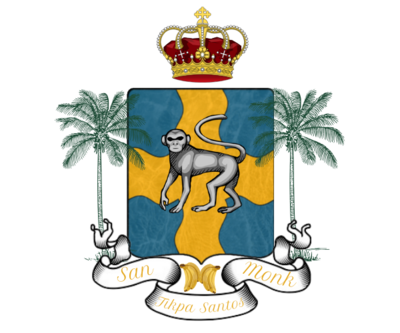History of Saint Monkey: Difference between revisions
Jump to navigation
Jump to search
Saint Monkey (talk | contribs) |
Saint Monkey (talk | contribs) No edit summary |
||
| Line 1: | Line 1: | ||
{{WIP}} | |||
This is a timeline of events in the '''history of Saint Monkey'''. This involves important legal, territorial and political events in Saint Monkey, and regime changes over its' history. It also includes events before Saint Monkey's formation. | This is a timeline of events in the '''history of Saint Monkey'''. This involves important legal, territorial and political events in Saint Monkey, and regime changes over its' history. It also includes events before Saint Monkey's formation. | ||
| Line 28: | Line 30: | ||
|- | |- | ||
|} | |} | ||
{{Saint Monkey}} | |||
Latest revision as of 10:48, 2 August 2024
This article is incomplete because it is pending further input from participants, or it is a work-in-progress by one author. Please comment on this article's talk page to share your input, comments and questions. Note: To contribute to this article, you may need to seek help from the author(s) of this page. |
This is a timeline of events in the history of Saint Monkey. This involves important legal, territorial and political events in Saint Monkey, and regime changes over its' history. It also includes events before Saint Monkey's formation.
10th millennium BC - 9th millennium BC
| Year | Date | Event |
|---|---|---|
| ? | ? | First people migrate to Saint Monkey. Date is unknown, However, there are records that date back to the 10th century BC. People arrive hundreds of years between each other and settle in their new homes, forming hundreds of tribes across modern-day Saint Monkey.. It is believed that they came from the east. |
9th millennium BC - 8th millennium BC
| Year | Date | Event |
|---|---|---|
| ~8888 BC? | March? | First census in Saint Monkeyian land, carried out by the Nito Tribe, near modern day Light City. They calculated approximately 700 tribes in Saint Monkey, and due to weather described at that time, it may have been during spring 8888 BC. |
